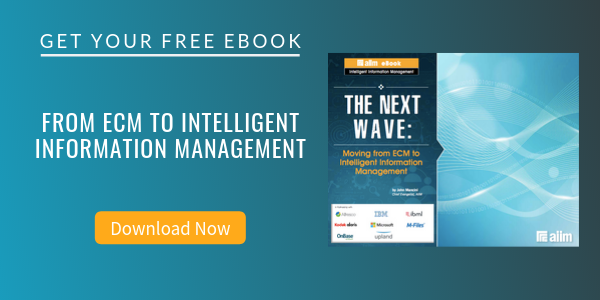
A History of Content Management in Two Humps
Enterprise Content Management (ECM)
Many of you know that I really like the following diagram by Geoffrey Moore as a depiction of the changes that are going on within the content management space.
The point Geoff makes with this diagram is that just about any business ecosystem lines itself up against this architecture. The core concept in this diagram is that there are typically 2 sweet spots in any ecosystem. The first is a complex systems play, which typically involves a limited number of customers. The second is a volume operations or consumer play which typically involves millions of customers.
Those of you that have been around the content management space for any period of time know that for most of the last 10 to 15 years, content management was a "left hump" play. The number of customers was limited – usually focused on mission-critical, document-intensive, departmentally-centric implementations. To use another term that we have developed with Geoff, this was the world of systems of record.
Enter the world of systems of engagement. Suddenly, we had all sorts of consumer-based products that, in some fashion, were built around documents and collaboration. Think Dropbox. Evernote. Google Docs. Box.net. Yammer.
Now, as these worlds collide, it is important to keep in mind a couple of points about the collision.
-
The way in which vendors make money in "left hump land" is very different from how they make money in "right hump land." Imagine a $1 million spent. In "left hump land," typically, 80% of this spend would accrue to the vendor before implementation even occurred. In "right hump land," the opposite would be true. Typically revenues are recognized with a long tail annuity stream once the product is implemented.
-
If the left side is characterized by complex implementations, the right side is characterized by a very very simple and quick implementation. Easy is the name of the game. Over time, one of the implications of this is that vendors on the left side will seek to simplify the implementation of their products and break monolithic systems into more consumable apps.
-
Vendors on the right side – in the consumer space – ultimately can be expected to push into the small and medium-sized enterprise market. Why? Because that's where the money is. And that's the only path to really build a financial model that is independent of advertising revenues.
-
The buyers are very different, as well. On the left side, typically, the buyers are IT or the business owner with a particular process problem. On the right side, it's the business.
-
The challenge for users to keep in mind is that solutions on the left side are very different from solutions on the right side. They are different in how they generate revenue. They are different in how they are implemented. They are different in who buys the solution. And they are different most importantly in the kinds of business problems that they helped solve.
That doesn't mean that one is good, and one is bad. It just means that they are different, and end-users need to understand the difference. If organized effectively, an electronic file cabinet in the cloud as a replacement to c-drive-itis and fileshare horrors can be an incredible first step in information management for an organization. But it's not the same as a process-centric transactionally-complex content management solution.
Final Thoughts on Consumer Solutions in the Corporate World
One last thing that end-users need to keep in mind as they think about solutions that are migrating from the consumer world to the enterprise world. A consumer application is not necessarily battle-hardened for enterprise use.
I recently had an experience with a company that was briefing me on some new products that they were bringing to the marketplace. After the conversation, I asked if I could get a copy of the presentation they had used. They said sure, but that the presentation was fairly large and so they would send me a Dropbox link after the meeting to the presentation.
Fast-forward about two hours, and the email with the link arrived. The link was not to the presentation; rather, it pointed to the top-level file directory for all the corporate files, which were maintained on Dropbox. I was looking at folders with names like "Patents," "Intellectual Property," "Executive Compensation," and "HR." The obvious point – the ease-of-use and openness associated with consumer applications doesn't always translate well into the world of corporate information assets.
About John Mancini
John Mancini is the President of Content Results, LLC and the Past President of AIIM. He is a well-known author, speaker, and advisor on information management, digital transformation and intelligent automation. John is a frequent keynote speaker and author of more than 30 eBooks on a variety of topics. He can be found on Twitter, LinkedIn and Facebook as jmancini77. Recent keynote topics include: The Stairway to Digital Transformation Navigating Disruptive Waters — 4 Things You Need to Know to Build Your Digital Transformation Strategy Getting Ahead of the Digital Transformation Curve Viewing Information Management Through a New Lens Digital Disruption: 6 Strategies to Avoid Being “Blockbustered” Specialties: Keynote speaker and writer on AI, RPA, intelligent Information Management, Intelligent Automation and Digital Transformation. Consensus-building with Boards to create strategic focus, action, and accountability. Extensive public speaking and public relations work Conversant and experienced in major technology issues and trends. Expert on inbound and content marketing, particularly in an association environment and on the Hubspot platform. John is a Phi Beta Kappa graduate of the College of William and Mary, and holds an M.A. in Public Policy from the Woodrow Wilson School at Princeton University.



